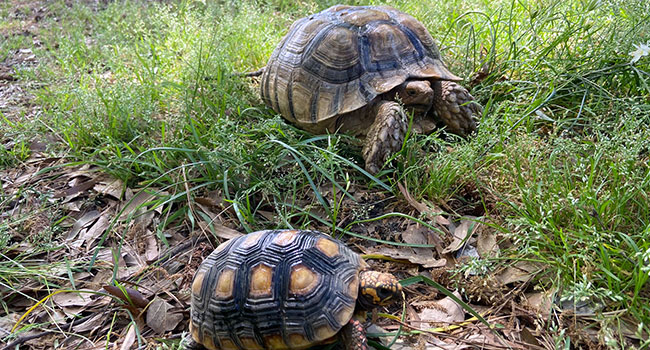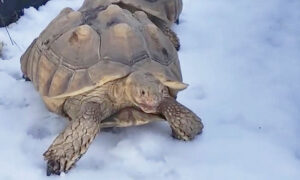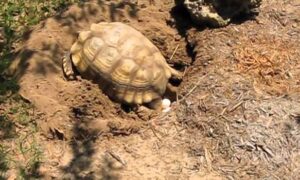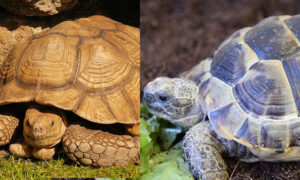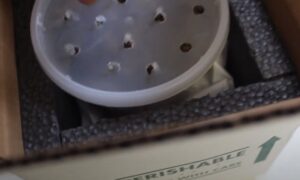If you’re looking at raising a red foot tortoise and you already have a sulcata tortoise, you may wonder if you can save space and house the two species together… It’s not ideal to house a sulcata and a red foot tortoise.
Do Not Mix Tortoise Species
It’s important that you avoid housing different tortoise species together.
Bacteria that is normal in one species may fatal in the other.
Different species of have different resistance and suceptibility to diseases and illnesses.
Diets are different, and when mixing species with different diets, it can be hard to stop one tortoise from eating the other tortoise’s food. For example, red foot tortoises need a lot of fruit and some animal proteins in the diet, but sulcata tortoises should not. Sulcatas are much larger than red foot tortoises, so you may find the sulcata tortoise bullying the red foot for the “better” food.
Size. Sulcatas are much larger than red foot tortoises. Sulcatas are also quite territorial, so they can use their size to bully and stress the much smaller red foot tortoise.
Slight variations in temperature and overall housing requirements. By housing a sulcata with a red foot tortoise, you will be housing one or theother subpar because you cannot 100% meet both species requirements. What may seem like a small variance could be the difference of thriving or debilitation.
Compare Sulcata Tortoise and Red Foot Tortoise
Many people will say that a sulcata and a red foot torotise has nearly the same requirements… That may be true in the sense of sulcatas can live on the lower end of 80-degrees, which is ideal for red foot tortoises, but that doesn’t mean you should.
Sulcata tortoises are native to areas in Africa with a wide range of habits. The Sahara Desert is either dry subtropical or dry tropical. The Sudan is very tropical, and Senegal is either very humid or very dry.
Red foot tortoises are native to a range of habitats from tropical forests to dry savannahs to semi-arid land in South America and Central Ameria.
| Sulcata Tortoise | Red Foot Tortoise | |
| Diet | Grass, Hay, Weeds, Greens | Broad leaf plants, Greens, Fruits, Vegetables, Animal Proteins |
| Heating | 80 – 90-degrees F | 80-degress F |
| Basking Temp | 100-degrees F | mid to low-90’s F |
| Humidity | Babies: 80%+ | Babies and Adults : 60-85% |
| Lighting | 10-12 hours full spectrum lighting per day | 10-12 hours full spectrum lighting per day |
| UVB | Yes | Yes |

